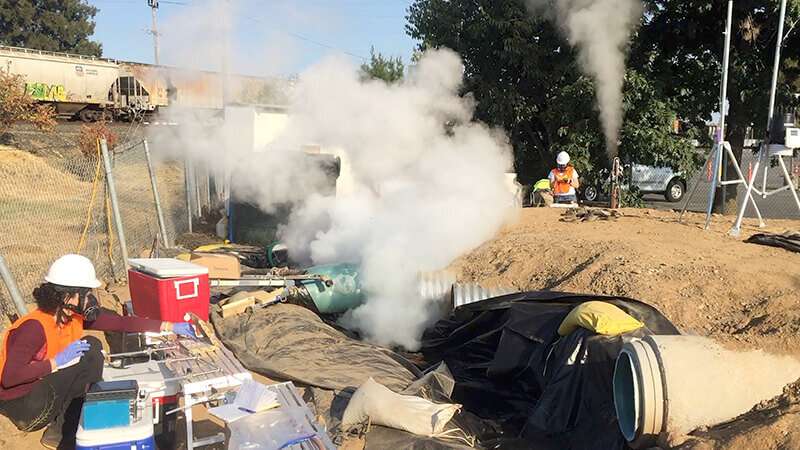
The tiny bits of plastic that
wear off bottles, plastic bags, automotive parts and even cosmetics get into
the soil and the water supply. They disrupt chemical cycles, throw off
ecosystem health and pollute environments both marine and terrestrial. They
eventually also get into the air, where they can damage lungs much more
effectively. But for that to happen, they have to be worn away by water or
earth and then be launched into the sky by winds.
A new study published in Nature Nanotechnology has discovered that a process that happens all over the developed world every day accelerates the airborne dispersal of these micro- and nanoplastic particles, posing a risk to human and environmental health. The study was led by Alexander Laskin, professor of analytical chemistry in Purdue University's College of Science.
Laskin is an expert in environmental forensics: He takes complex samples and uses analytical chemistry methods to determine what, exactly, is in the air. In this case, what's in the air are previously unsuspected amounts of aerosolized nanoplastics.
The origin of the issue lurks under the ground in every modern city, in technology to repair sewer pipes. When a sewer pipe breaks, the options to fix it are to physically dig a hole around it and replace a section of it or to treat it like the weakened area of a human artery and install a stent.
"What they do," explains Laskin, "is they put a resin-soaked sock into the pipe. That's what it is, effectively a big sock, and then they cure it into place. It seals the pipe without any need for excavation. It is a very sophisticated and very practical technology. When they inflate the sock, they use pressurized steam, which then emerges as a discharged chemical plume. There's no control on the resulting emissions, and it turns out that they produce a significant amount of pollution, including nanoplastic particles."
The result is that around every modern urban or suburban area where this process takes place, there are uncounted and significant sources of these microplastics and nanoplastics, sources that have not before been considered or examined. Before, scientists thought the only route for plastics to get into the air is slow degradation followed by consistent wind.
"The amount of microplastic and nanoplastic in the atmosphere, floating around, has been explicitly assumed to only come from windborne sources. What we show here is that there is a process commonly used throughout the whole modern world that is dumping nanoplastic pollution into the air," Laskin said.
Laskin worked with Andrew Whelton, a Purdue professor of civil engineering and environmental and ecological engineering, to quantify the impact of this cured-in-place pipe repair method, which Whelton has been studying for almost a decade. Whelton's research has helped advise municipalities, utilities and public health agencies on how to lessen environmental pollution from this pipe repair method and protect the workers better.
This new study further unravels the mystery of what exactly is in the air when construction workers repair pipes using the cured-in-place method, something Whelton and other Purdue researchers have been studying for years.
"When we first investigated the plastic pipe air pollution practice, we discovered there had been no independent testing or oversight," Whelton said. "It was being used in neighborhoods and in environmentally sensitive areas, sometimes prompting immediate health impacts to workers, bystanders, emergency responders and the environment. We often see workers who implement this pipe repair standing inside or near the micro- and nanoplastics waste exhaust plumes without respiratory protection. This new study indicates these workers and ones before them have likely been inhaling microplastics and nanoplastics."
The effect of inhaled, aerosolized microplastics on human health has not been widely studied—not least because scientists have not been aware of it as a significant problem. This paper is important, because like the first studies that heralded the trouble with chlorofluorocarbons (CFCs) in aerosol sprays (like hairspray), it's the first one to point to a potential significant risk that scientists were previously unaware of.
They conducted the chemical imaging measurements of nanoplastics at the Advanced Light Source Synchrotron facility operated by Lawrence Berkeley National Laboratory and at the Environmental Molecular Sciences Laboratory operated by Pacific Northwest National Laboratory, with additional expertise provided by the Sonoma Technology staff. Ana Morales, a doctoral student in Laskin's lab, integrated the observations into the published study as its first author.
"It's not that no one cares about this problem," Laskin said. "But with knowledge comes the need for solutions. Now that we know there is a problem, once we have assessed the issue, now we can develop mitigations and strategies to keep everyone safe."

 Previous page
Previous page Back to top
Back to top







